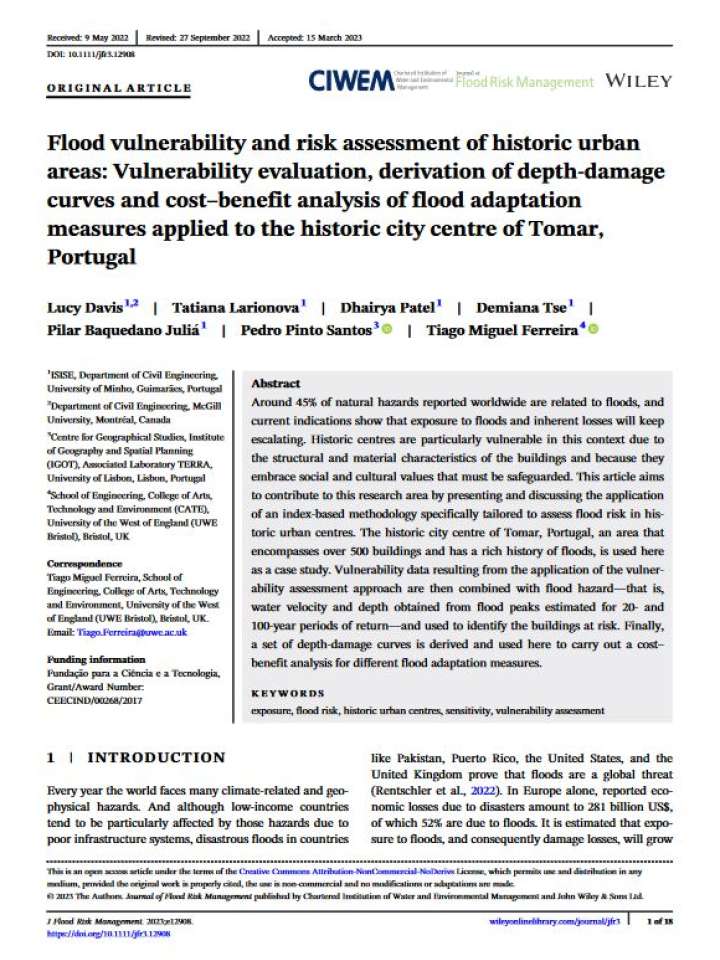Flood vulnerability and risk assessment of historic urban areas: Vulnerability evaluation, derivation of depth-damage curves and cost–benefit analysis of flood adaptation measures applied to the historic city centre of Tomar, Portugal
This article aims to contribute to the research on flood vulnerability in of historic urban areas by presenting and discussing the application of an index-based methodology specifically tailored to assess flood risk in historic urban centres. Around 45% of natural hazards reported worldwide are related to floods, and current indications show that exposure to floods and inherent losses will keep escalating. Historic centres are particularly vulnerable in this context due to the structural and material characteristics of the buildings and because they embrace social and cultural values that must be safeguarded.
The historic city centre of Tomar, Portugal, an area that encompasses over 500 buildings and has a rich history of floods, is used here as a case study. Vulnerability data resulting from the application of the vulnerability assessment approach are then combined with flood hazard—that is, water velocity and depth obtained from flood peaks estimated for 20- and 100-year periods of return—and used to identify the buildings at risk. Finally, a set of depth-damage curves is derived and used here to carry out a cost–benefit analysis for different flood adaptation measures.
Explore further
